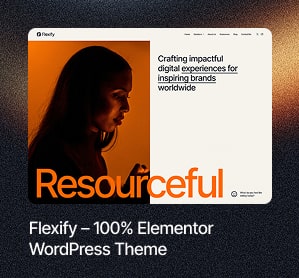User experience (UX) has grown from a secondary consideration to a central focus in modern web development. Today’s users expect digital platforms to be more than functional; they demand simplicity, clarity, and relevance at every stage of interaction. Whether browsing a product catalog or reading an article, the smoothness of that process significantly shapes their overall impression of a brand.
Web developers now understand that building a technically sound website isn’t enough. The structure, flow, and visual language must align with the expectations of the audience. Websites that feel clunky or confusing are quickly abandoned, often in favor of competitors that offer a more fluid experience.
This shift in user expectations means that UX design is no longer optional, but a key component of web development.
Balancing Engagement and Ethical Responsibility
Users have a very short attention span nowadays. Data shows that people’s average attention span has reduced from 75 seconds in 2012 to 47 seconds in the last few years. This is a significant reduction of close to 40%. Thus, marketers and developers are refining their techniques to boost interaction and encourage users to stay longer.
However, these practices have raised ethical concerns. The pursuit of engagement must be tempered with an awareness of the psychological impact certain design choices may have on visitors. This is particularly relevant in cases where sites use repetitive notifications, infinite scrolling, or emotionally charged content.
Consider the example of social media sites, platforms, or apps that use psychological tactics to engage users. According to TruLaw, this can result in social media addiction, causing mental health problems, such as anxiety, depression, etc. Besides these standard mental health conditions, some excessive users also face body dysmorphia, low self-esteem, and suicidal ideation.
Individuals who have suffered from this problem have also taken legal recourse. They have filed a social media addiction lawsuit against the company whose platform has caused them harm. While the lawsuit focuses specifically on social media giants, its broader message touches all corners of the digital design community.
For developers, the takeaway is clear: creating an engaging website must not come at the cost of user well-being. Ethical UX design involves thinking beyond clicks and scrolls. It means understanding how visual cues, navigation flows, and content presentation can either support healthy engagement or contribute to unhealthy digital habits.
How UX Drives Business Success
User experience is often the hidden engine behind business results. As stated in a Forbes article, your website’s design can directly impact consumers’ perception of your brand. User experience can influence first impressions of your business, credibility, and trust. Thus, a poor experience may cause your potential customers to leave your website immediately.
A well-designed website quietly leads users toward the actions that matter: signing up for a service, purchasing, or exploring more content. It does this not through aggressive calls to action, but by removing friction at every touchpoint. Visitors are likely to trust a natural and well-organized site, even if they can’t pinpoint why.
Conversion rates often rise when UX is improved, even if no other significant changes are made. Small irritations, confusing menus, slow-loading pages, and hard-to-read text add up and drive visitors away. On the other hand, a website that feels smooth to explore creates a sense of confidence in the brand.
Partnering with a skilled website design agency can help identify and eliminate these friction points, ensuring the site not only looks good but also performs seamlessly.
From a business perspective, putting money into User Experience (UX) can lead to cost savings over time. Well-thought-out design offers quantifiable advantages such as decreased support inquiries, reduced bounce rates, and improved customer loyalty. This can further influence SEO rankings, as Google’s latest Page Experience Update considers it essential. In fact, when the update was rolled out, many websites offering poor experiences were negatively impacted.
Accessibility: Designing for Everyone
Accessibility is sometimes treated as an afterthought in web development, but it deserves a primary role in any discussion of user experience. This involves ensuring your website is usable and interactive for all individuals, encompassing those with visual, hearing, mental, or physical disabilities.
Developing accessible websites often begins with the basics: using semantic HTML, providing image alt text, choosing readable font sizes, etc. However, the effort goes deeper. Thoughtful accessibility means ensuring forms are easy to complete with assistive technologies, videos include transcripts or captions, etc.
Far from limiting creativity, accessibility strengthens UX by making design choices more deliberate. When developers think about how someone might experience their site using a screen reader or keyboard-only input, they will simplify, streamline, and clarify interfaces. The end result is a better experience for all users, not just those with disabilities.
Legal considerations also play a role. In many countries, websites must meet accessibility standards or risk fines and legal action. But beyond compliance, designing for inclusion builds trust and reflects a company’s broader values. It sends the message that all users matter and that the business respects the full spectrum of digital needs.
This is also important from a business perspective, as it can increase your user base. According to the World Health Organization (WHO), around 1.3 billion people worldwide face significant disability. This represents around 16% of the population, which you might miss if your website is not optimized for accessibility.
Frequently Asked Questions

How does UX differ from UI in web development?
UX (User Experience) focuses on how users interact with a website and how they feel during that interaction. It includes aspects like ease of navigation, content clarity, and how smoothly users can achieve their goals. UI (User Interface), on the other hand, deals with the visual layout of the site, colors, buttons, typography, and overall aesthetics. UX is about function and flow; UI is about look and feel.
Can improving UX impact a site’s SEO performance?
Yes, search engines increasingly value user behavior signals when ranking sites. A logically organized and easy-to-use website typically experiences fewer users leaving immediately and greater user interaction, which are beneficial signals for SEO. Quick loading speeds, adaptability to mobile devices, and clear navigation also enhance how easily the site can be found through searches.
What is the role of content strategy in UX?
Content is a major component of the user experience. Even with great design, poorly structured or irrelevant content can frustrate users. A solid content strategy ensures that users get the right information at the right time, in a tone and format that matches their expectations. This builds trust and supports the user journey.
New technologies such as artificial intelligence and augmented reality are changing how users interact with digital products. Features like customized content, voice-activated controls, and interactive components aim to make websites more attuned to the specific requirements of each user.
Despite these advancements, the fundamental goal remains to make digital interactions meaningful and straightforward. Web developers will need to focus on human-centered design to create innovative and user-friendly experiences.


